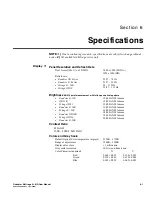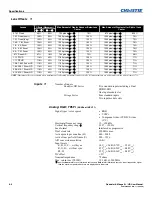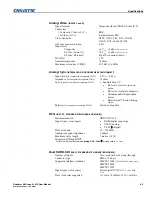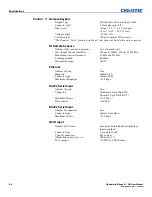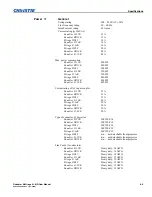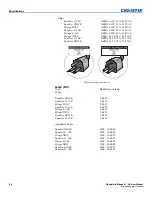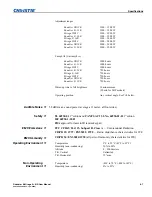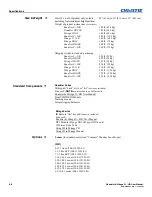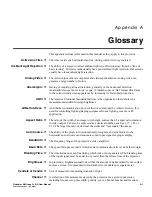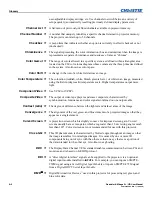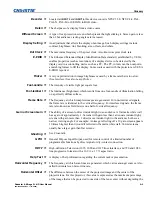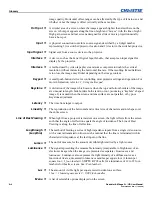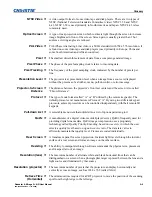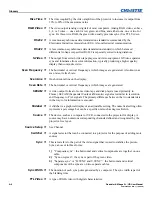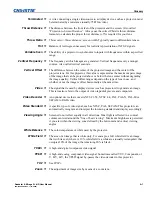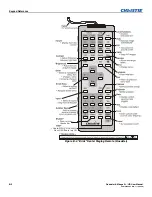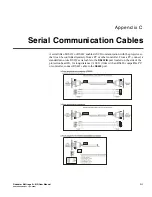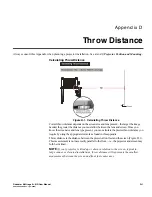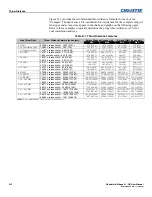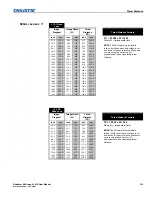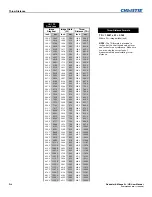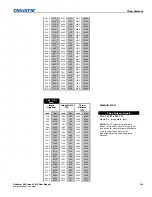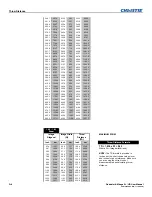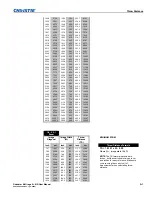
Glossary
A-4
Roadster & Mirage S+/HD User Manual
020-100002-04 Rev. 1 (12-2008)
image quality. Horizontal offset ranges can be affected by the type of lens in use, and
whether or not the image is offset vertically at the same time.
A circular area of a screen where the image appears brighter than elsewhere on the
screen. A hot spot appears along the line of sight and “moves” with the line of sight.
High gain screens and rear screens designed for slide or movie projection usually
have a hot spot.
A physical connection route for a source signal, described by a 2-digit number
representing 1) its switcher/projector location and 2) its slot in the switcher/projector.
Signal sent from a source device to the projector.
A device, such as the
Serial Digital Input Module
, that accepts an input signal for
display by the projector.
A method used by video tape players and some computers to double the vertical
resolution without increasing the horizontal line rate. If the resulting frame/field rate
is too low, the image may flicker depending on the image content.
A small push-button device for controlling most projector settings and operation. For
more information, refer to
3.3, Using the Keypad.
A distortion of the image which occurs when the top and bottom borders of the image
are unequal in length. Side borders both slant in or out, producing a “keyhole” shaped
image. It is caused when the screen and lens surface are not parallel, or by poor
Keystone adjustment.
The time from input to output.
The reproduction of the horizontal and vertical size of characters and/or shapes over
the entire screen.
When light from a projector is incident on a screen, the light reflects from the screen
such that the angle of reflection equals the angle of incidence. The Line of Best
Viewing is along the line of reflection.
The method of feeding a series of high impedance inputs from a single video source
with a coaxial transmission line in such a manner that the line is terminated with its
characteristic impedance at the last input on the line.
The unit of measure for the amount of visible light emitted by a light source.
The signal representing the measurable intensity (comparable to brightness) of an
electronic image when the image is represented as separate
chrominance
and
luminance
. Luminance also expresses the light intensity of a diffuse source as a
function of its area; measured in lumens or candles per square foot (1 lumen per
square foot = 1
foot-lambert
). SMPTE RP 98 calls for a luminance of 12 to 22 foot-
lamberts for theatre screens. See:
Foot-lambert
.
The amount of visible light per square meter incident on a surface.
1 lux = 1 lumen/square meter = 0.093 foot-candles
A list of selectable options displayed on the screen.
Hot
Spot
Input
Input Signal
Interface
Interlace
Keypad
Keystone
Latency
Linearity
Line of Best Viewing
Loopthrough
(Loopthru)
Lumen
Luminance
Lux
Menu


